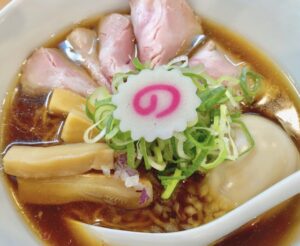- English subtitles -
Japanese form
- postpositions
Next, we learn about postposition.
There are postpositions in Japanese.
Saru wa banana wo taberu
(The monkey eats a banana.)
Let’s take a look at the sentence.
“Ga” in “Saru ga” and “o” in “banana” are postpositions.
postpositions are very important.
postpositions determine the role of a word after it.
Saru wa banana wo taberu
“Ga” in “Saru ga” has the role of representing the subject.
Saru eat banana, which is the subject of Saru.
It means “Saru ga taberu”.
Then, let’s compare,
Saru ga banana wo tabemasu, and
Banana ga saru wo tabemsu.
Banana eat Saru, and the subject is banana because “ga” stands for the subject.
It means that banana will eat.
It is interesting.
Then, how about,
Saru ga banana wo tabemasu,
Banana wo saru ga tabemasu.
The order of saru and bananas is different.
However, since there are postpositions, the meaning does not change even if the order of the words changes.
The role of postposition is great.
Let’s look at postpositions a little more.
Ani ga natsu ni kuruma de umi ni ikimasu
Subject time method direction
(兄が 夏に 車で 海へ行きます。)
My brother goes to the sea by car in the summer.
ga, ni, de, he, are postpositions.
Ani ga’s “ga” is the subject.
natu ni, the “ni” represents time.
kuruma de, the “de” represents a method or means.
umi he, the meeting “he” indicates the direction.
In this way, postpositions can be used to express various meanings.
- Japanese subtitles -
日本語の形
3、助詞
次に助詞について話します。
日本語には助詞があります。
猿 が バナナ を 食べます
助詞 助詞
の文を見てみましょう。
「猿が」の「が」、「バナナを」の「を」、は助詞です。
助詞はとても大切です。
助詞は言葉の後についてその言葉の役割を決めます。
猿が バナナを 食べます。
「猿が」の、「が」は主語を表す役割を持っています。
猿がバナナを食べます、は、猿が主語です。
「猿が食べます」、と言う意味です。
では、
猿 が バナナ を 食べます、と、
バナナ が 猿 を 食べます、
を比較してみましょう。
バナナが猿を食べます、の「が」が主語を表しますから主語はバナナです。
バナナが食べますと言う意味になってしまいます。
面白いですね。
では、
猿がバナナを食べます、と
バナナを猿が食べます、
はどうでしょうか。
猿が、と、バナナを、の順番が違います。
しかし、助詞があるので言葉の順番が変わっても意味は変わりません。
助詞の役割は大きいです。
もう少し助詞を見てみましょう。
兄 が 夏 に 車 で 海 へ 行きます。
主語 時間 方法・手段 方向
が、に、で、へ、は助詞です。
兄が、の「が」は主語です。
夏に、の「に」は時間を表します。
車で、の「で」は方法や手段を表します。
海へ、の会「へ」は方向を表します。
このように助詞を使っていろいろな意味を表すことができます。
If you have any questions, ask them for free! ➡ Japanese Question Form
"は "と "が "の使い分けについて
Distinguishing between the use of “ha” and “ga”
The simple explanation is that “ha” has what it wants to say after “ha” and “ga” has what it wants to say before “ga.
1, “saru ga banana o tabemasu” is A monkey eats a banana.
2, “saru wa banana o tabemasu” is A monkey eats a banana.
The translations are same in English. But in Japanese something in particular that they want to say is different.
What they want to say in particular in the first sentence is monkey.
What they want to say especially in the second sentence is a banana.
“は “と “が “の使い分けについて
シンプルな説明では、「は」は、「は」の後ろに言いたいことがあり、「が」は、「が」の前に言いたいことがある、です。
1,「さるがバナナを食べます。」
2、「さるはバナナをたべます。」
英語では同じ訳(A monkey eats a banana.)になります。しかし、日本語では、言いたいことが違います。
1番目の文で特に言いたいことは、サルです。
2番目の文で特に言いたいことは、バナナです。

Tips for taking private lessons
Make a list of all the questions that come to mind. Ask your tutor all of them in the lesson.
If your tutor can’t answer them on the spot, they will come up with an explanation by next time.

Types of the Second Person in Japanese and their Differences over Time
What are the different types of the second person in your language? In English, “you” and “your” are examples, but

What kind of ramen is popular in Japan?
If you ask Japanese people what their favorite dish is, ramen is one of the top three. There are many

Decoding the Japanese Views on Love and Marriage
Some people will fall in love with Japanese people when they visit Japan on vacation or while staying in Japan

Teru teru bozu meaning in Japanese
Have you ever heard of the term teru teru bozu? Children don’t make them anymore, so you may not have





